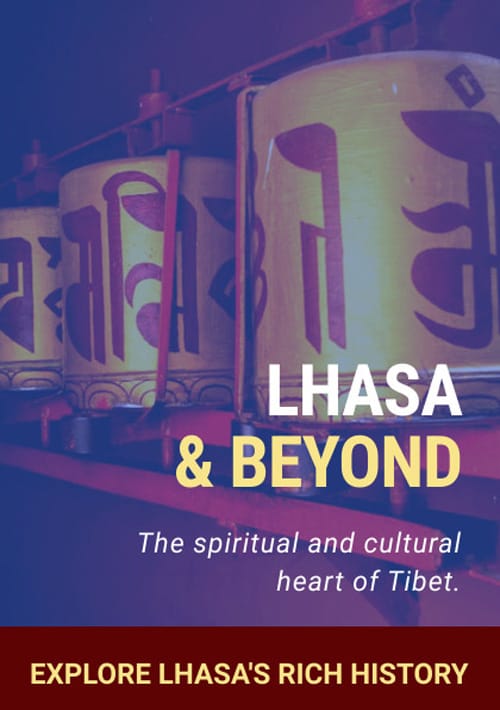
Drepung Monastery, a majestic architectural marvel nestled amidst the rolling hills of Lhasa, Tibet, stands as a testament to the rich cultural and spiritual heritage of the region. This ancient monastic complex, once home to thousands of monks, continues to captivate visitors with its grandeur and serene atmosphere.
A Glimpse into History
Founded in 1416 by Jamyang Choge Tashi Palden, a prominent disciple of Tsongkhapa, the founder of the Gelug school of Tibetan Buddhism, Drepung Monastery quickly rose to prominence. It served as the principal seat of the Gelugpa order and was renowned for its rigorous academic traditions and high standards of monastic discipline. At its peak, Drepung was home to an astonishing 10,000 monks, making it the largest monastery in the world.
The monastery’s strategic location on the slopes of Mount Gephel offered not only stunning views of the Lhasa Valley but also provided a sense of seclusion and spiritual tranquility. The name “Drepung” itself, meaning “rice heap,” is a reference to the white buildings that cascade down the hillside, resembling grains of rice.
Architectural Splendor
Drepung Monastery is a masterpiece of Tibetan architecture, showcasing the intricate craftsmanship and artistic flair of its builders. The complex is composed of numerous halls, temples, and courtyards, each with its own unique features and historical significance. The most notable structures include:
A Living Tradition
Despite the turbulent political events of the 20th century, Drepung Monastery continues to thrive as a center of Buddhist learning and practice. Today, although the number of resident monks has significantly decreased, the monastery remains an important pilgrimage site for Tibetan Buddhists from around the world.
Visitors to Drepung Monastery can witness the daily lives of monks, observe traditional Buddhist rituals, and participate in cultural activities such as the famous monk debates. The monastery also hosts a variety of festivals throughout the year, attracting both local and international tourists.
A Cultural Treasure
Drepung Monastery is not only a place of religious significance but also a cultural treasure trove. The monastery’s extensive collection of ancient manuscripts, thangkas (Tibetan scroll paintings), and religious artifacts offers a glimpse into the rich history and artistic traditions of Tibet.
The monastery’s libraries house a vast collection of Buddhist texts, including the Kangyur and Tengyur, the canonical texts of Tibetan Buddhism. These texts contain profound philosophical and spiritual teachings that have shaped the intellectual and spiritual landscape of Tibet for centuries.
A Spiritual Retreat
For those seeking a spiritual retreat, Drepung Monastery offers a serene and inspiring environment. The peaceful ambiance, the chanting of monks, and the breathtaking natural surroundings create a conducive atmosphere for meditation and contemplation. Visitors can participate in meditation sessions, attend religious ceremonies, or simply wander through the monastery grounds, absorbing the spiritual energy of the place.
In conclusion, Drepung Monastery stands as a symbol of Tibet’s rich cultural and spiritual heritage. Its magnificent architecture, ancient traditions, and serene atmosphere continue to attract visitors from all over the world. Whether you are a history buff, a culture enthusiast, or a spiritual seeker, Drepung Monastery offers a unique and unforgettable experience.
Best Time to Visit: The monastery is open year-round, but spring and autumn offer the most pleasant weather. Visiting during the Shoton Festival adds a unique cultural dimension to the experience.
How to Get There: Drepung Monastery is about a 20-minute drive from central Lhasa. Taxis and guided tours are convenient options for reaching the site.
Dress Code: Modest clothing is recommended. Avoid wearing shorts or revealing attire as a sign of respect for the monastery’s sacred environment.
Photography: Photography is generally permitted in outdoor areas, but restrictions apply inside certain halls. Always check for signs or ask for permission before taking photos.
Physical Preparedness: The monastery is located at an elevation of over 3,800 meters. Visitors should acclimatize to the high altitude before exploring the site, as the terrain involves some uphill walking.
Conquer Everest, embrace adventure,
experience greatness!
Experience spiritual awakening and vibrant culture
on the Saga Dawa Festival!
Tibet Holiday is a premier Tibet travel agency offering personalized tours to explore the rich culture and stunning landscapes of Tibet. With nearly 20 years of experience, our dedicated team of local experts provides unique insights into Tibetan traditions and spiritual sites. Committed to sustainable travel, we collaborate with local businesses, ensuring an authentic and enriching experience. Whether seeking adventure or cultural exploration, Tibet Holiday designs custom journeys tailored to your interests, making it a trusted choice for unforgettable Tibet experiences.